Oriental Spiritual Paintings
The Third Stop of the International Tour Exhibition
·Florence·
Tour Exhibition Time: Expected to be in July 2025
Historical origins
Florence, located in central Italy, is rich in history and culture since the time of Etruscan. In 59 BC, the Romans founded this city on the Arno River and named it Florentia. In the following thousand years, Florence went through many regime changes. From the 14th to the 16th century, a European ideological and cultural movement emerged in the city, making Florence the birthplace of the Renaissance and the most famous art center in Europe. .
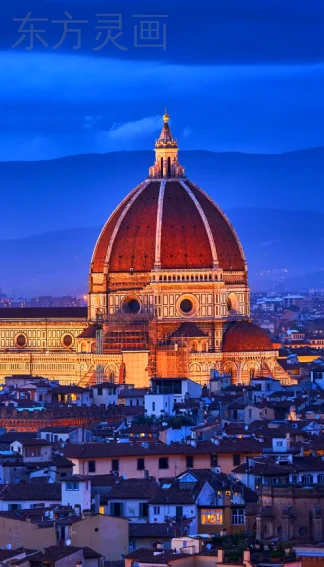
1.Architectural Style
The Combination of Gothic and Renaissance Styles
The church integrates the vertical sense of the Gothic style and the symmetrical beauty of the Renaissance style.
The church integrates the vertical sense of the Gothic style and the symmetrical beauty of the Renaissance style.
Appearance: It is decorated with white, green and pink marbles, presenting a rich variety of colors.
2.Dome Design
The Contribution of Brunelleschi
He designed a huge dome without a supporting structure,
adopting a double-shell structure and a herringbone masonry method.
Technological Breakthrough: The dome is approximately 114 meters high, marking a significant breakthrough in architectural technology at that time.
3.Geometry and Mathematics
The Geometry of the Gods
The design makes use of the golden ratio and symmetry,
embodying harmony and perfection.
Structural Calculation: Brunelleschi ensured the stability of the dome through precise calculations.
In the heart of Florence, Italy, the Florence Cathedral stands majestically, telling the glorious story of the Renaissance with its unique architectural style and exquisite craftsmanship. This cathedral, which was first built in 1296, integrates the essence of the Gothic and Renaissance styles and has become a shining pearl in the history of European architecture.
This Gothic building with a red brick dome has witnessed the historical changes over hundreds of years. It is located on the site of the old church, which once enshrined Santa Reparata. In 1296, the construction of this new church began and it was finally completed in 1436. The architect Arnolfo di Cambio supervised the construction of this church throughout the whole process.
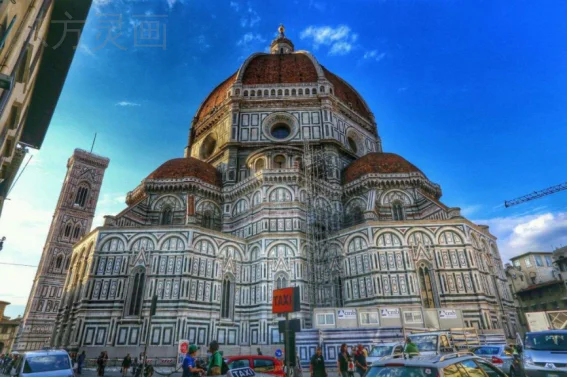

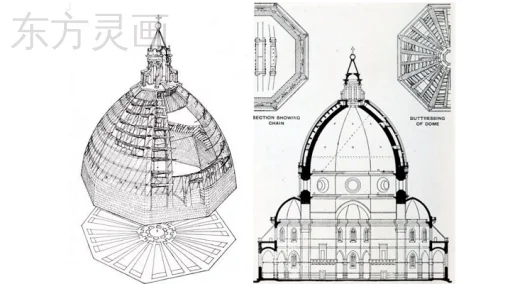
Its dome design is particularly eye-catching. With a diameter of 45 meters and a height of over 100 meters, it was ingeniously designed by the architect Brunelleschi. Instead of using the traditional wooden structure for support, he made use of complex frameworks and buttress techniques to achieve the perfect balance and stability of the dome.
This rebellious way of piling up stones not only showcases the brilliant achievements of human wisdom but also reflects the ultimate pursuit of classical aesthetics and geometric proportions during the Renaissance period.
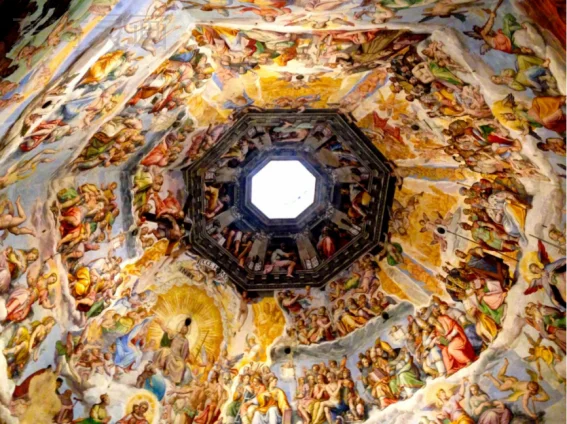
was painted by Giorgio Vasari, a student of Michelangelo, on the inner part of the dome of the Florence Cathedral (Cattedrale di Santa Maria del Fiore).
The exterior of the cathedral is decorated with red, white, and green marbles, forming distinct geometric patterns and presenting a solemn and magnificent aesthetic feeling. The interior is filled with exquisite murals and sculptures, all of which are rare art treasures.
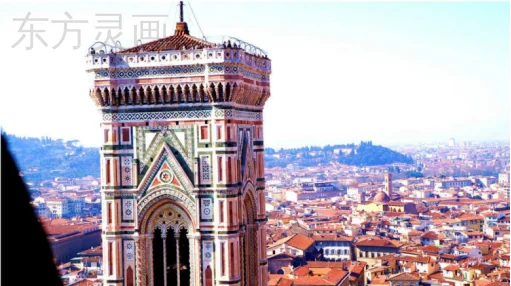
The dome of the church was designed by the Italian architect Filippo Brunelleschi. It is the largest brick-built dome in history, and its grandeur is truly breathtaking.
The charm of the Cattedrale di Santa Maria del Fiore lies not only in its magnificent exterior but also in the art treasures within. Giorgio Vasari's mural "The Last Judgment" and the intricate and delicate clock face painted by Paolo Uccello are must-sees for art enthusiasts.
In addition, the cathedral complex also includes the Baptistery (a small church) and Giotto's Bell Tower (an independent bell tower). These buildings complement the main cathedral and together form a beautiful picture.
This is not just a religious building; it is the crystallization of technology and art, demonstrating humanity's remarkable creativity in architecture and art.
In this city filled with an artistic atmosphere, from the ancient cathedral to modern art exhibitions, Florence has always attracted the attention of the world with its unique charm. Let's look forward together to the third stop of the 2025 international tour exhibition of Oriental Spiritual Paintings in Florence, and experience the resonance and inheritance of art across time and space.
Appreciation of works

Material: oil painting on canvas
Specification: 110×90 cm
Creation date: 2015
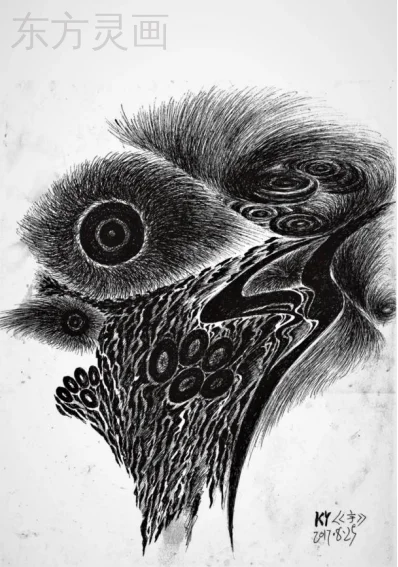
Material: pen sketch
Specification: 29.5×21 cm
Creation Date: August 25, 2017

Material: pen sketch
Specification: 29.5×21 cm
Creation Date: June 20, 2017
Wu Keyang's "Oriental Spiritual Painting"
Integrating the profound heritage of oriental traditional culture
The painting style is spiritual and spiritual.
High dimensions present the origin and meaning of life
Seek the essence of everything in the universe
And the awareness and perception of each life at the moment
This, in turn, triggers the viewers
to engage in deep introspective thinking.
In the exploration of contemporary spiritual aesthetics,
it stands out as unique.
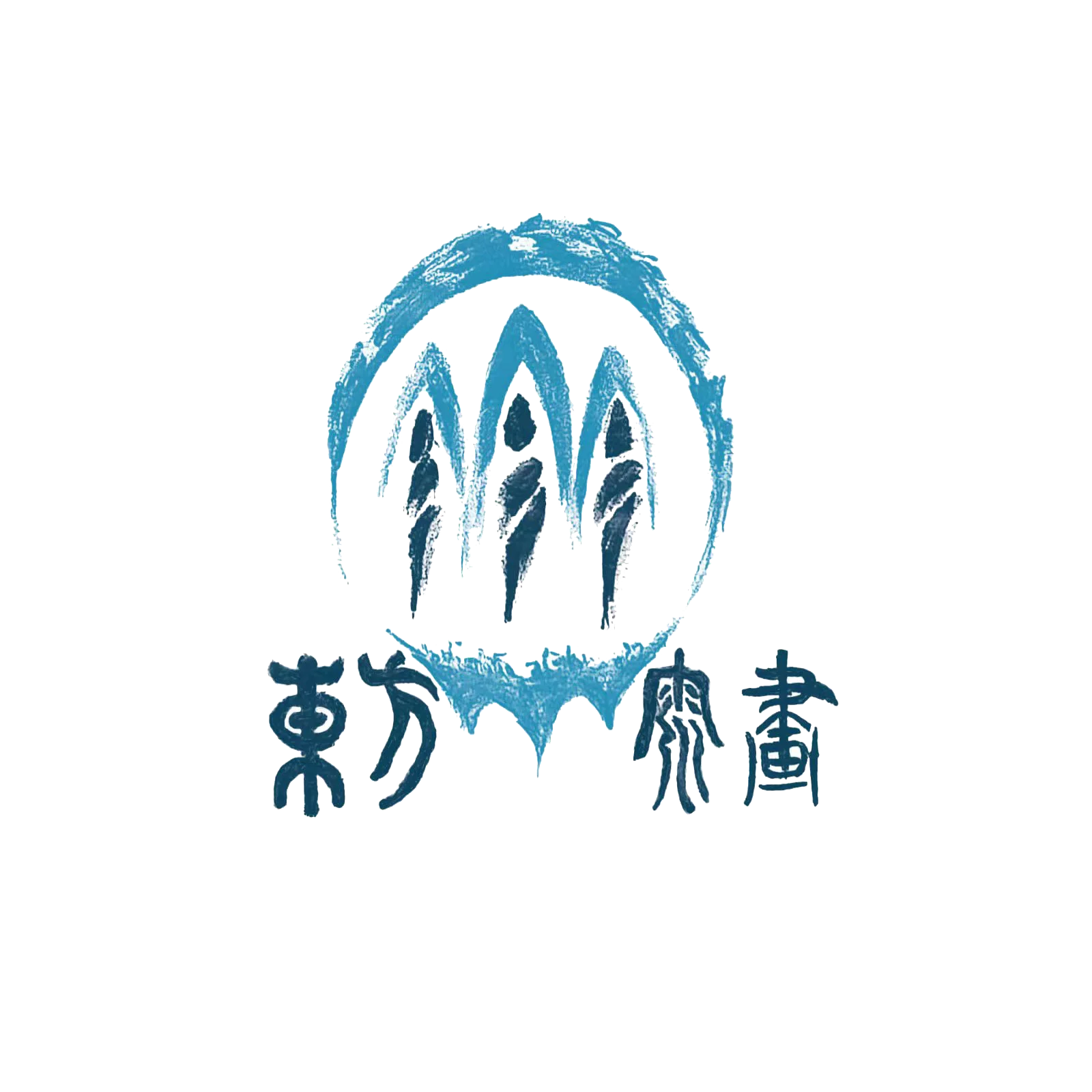
Leave a Reply